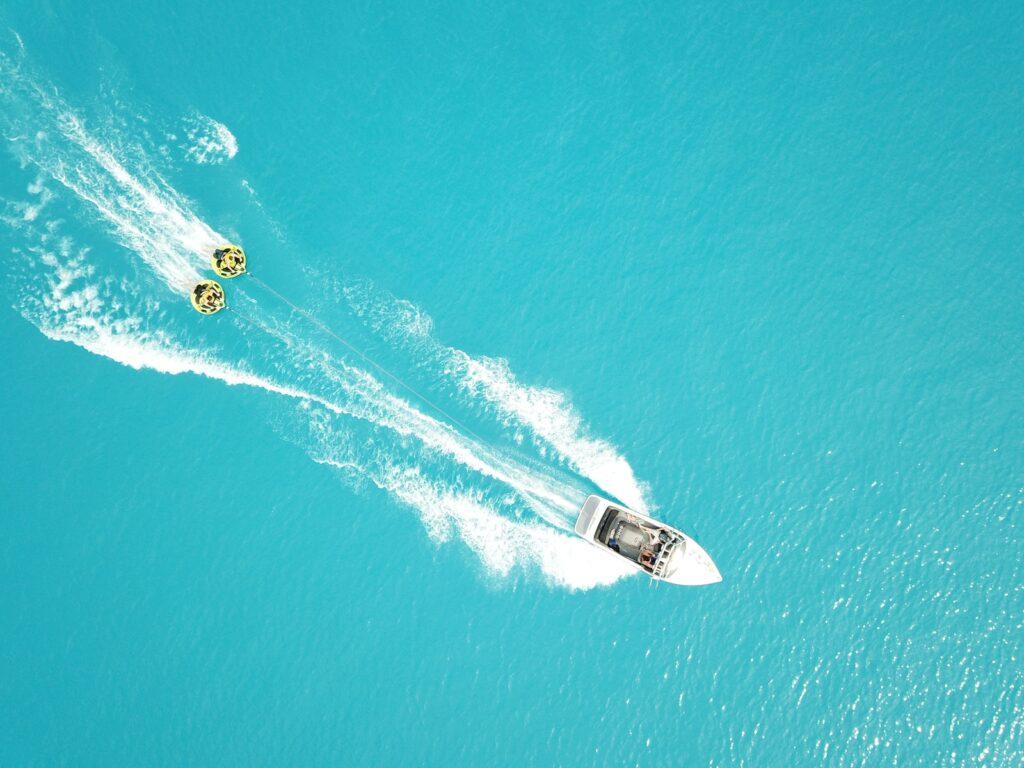Best Boat Buffers
Boats are one of the most valuable investments in a person’s life; they provide hours of fun and relaxation, and can even be a source of income for some. But when it comes to maintaining a boat, there are a variety of tasks that need to be completed in order to ensure its safety, comfort, and performance. One of the most important of these tasks is the use of boat buffers. Boat buffers are essential tools for boat maintenance and can help keep your boat in tip-top condition.
Best Boat Buffers
The best boat buffers will depend on the type of boat you have and the type of buffing you need. They are either orbital or rotary. Orbital buffers are less aggressive and are best for light polishing and waxing, while rotary buffers are more powerful and better for heavier buffing jobs. When choosing a buffer, you should consider the size of the boat, the type of finish, the condition of the surface, and the type of buffing pad needed. Check the manufacturer’s instructions for your boat to make sure you are using the correct tools and techniques.
- 3M Marine Ultra Performance Paste Wax
- Meguiar’s Marine/RV One Step Cleaner Wax
- Star brite Ultimate Boat Guard
- MEY Protective Boat Shine
- Turtle Wax Marine Express Wax
- McGuire’s Marine Polish
- Collinite 845 Insulator Wax
- Marine 31 Gel Coat Heavy Cut Oxidation Remover
- Collinite 476s Super Doublecoat Wax
- Meguiar’s Marine/RV Fiberglass Restoration System
When shopping for a boat buffer, it is important to look for one with variable speed settings so you can adjust it to your needs. Look for a buffer with a good handle and comfortable grip for easy maneuverability. You should also look for buffers with safety features, such as a safety lock to protect your hands from the spinning buffer. It is important to ensure you have the proper safety equipment, such as safety glasses, gloves, and a dust mask, before operating a boat buffer.

What is better buffer or polisher?
It depends on the job that needs to be done. A buffer is used to remove surface imperfections, such as scratches, from hard surfaces. Polisher for boats is used to refine and shine surfaces, making them look their best. If the job requires removing scratches, a buffer is the better choice. If the job requires polishing the surface to make it look its best, then a polisher is the better choice.
It is important to choose the right buffer or polisher for the job. Different buffers and polishers may have different features such as different RPMs, power settings, and attachments. A buffer should be chosen for its ability to remove scratches, and a polisher should be chosen for its ability to give a smooth and glossy finish. It is also important to choose the right type of buffer or polisher for the material that needs to be worked on. Different materials may require different kinds of buffers or polishers in order to achieve the desired result.
What speed buffer for waxing a boat?
The speed buffer you should be used for waxing a boat is dependent on the size and type of boat. For a small fiberglass boat, a variable speed buffer with a range of 1500-3000 RPM is recommended. For a large boat, a speed buffer with a variable speed range of 1000-3000 RPM should be used. Use a buffer with a soft buffing pad and a suitable wax product for the type of boat.
A boat buffer is a type of electric tool used to buff, polish, and wax a boat’s hull. It works by using a rotating buffer pad to smooth out scratches, stains, and watermarks that can accumulate over time. The buffer pad is attached to an adjustable handle and powered by a motor, which allows for easy maneuverability and faster buffing. Buffers can be used on any type of boat material, from fiberglass to wood to aluminum.

Benefits of Using a Boat Buffer
It is a device used to polish and buff the surface of a boat. Its main benefit is that it can help restore the luster and shine of a boat’s surface, making it look newer and more attractive. It can help protect the boat’s surface from scratches, discoloration, and other damage caused by exposure to the elements. The buffer can also help reduce the amount of time and effort needed to maintain and clean the boat, making it easier to keep the boat looking great.
Restores Shine and Luster
One of the primary benefits of using a boat buffer is that it can restore shine and luster to a boat’s exterior. This is especially important for boats that are exposed to the elements, as sun and water can cause the surface to become dull and faded. A buffer can help to restore the boat’s original shine, making it look like it just came off the showroom floor.
Removes Stains and Scratches
Another benefit of using a boat buffer is that it can help to remove unwanted stains and scratches from the boat’s surface. This is important for maintaining the boat’s appearance and can help to prevent further damage.
Protects from Future Damage
In addition to removing existing damage, a boat buffer can also help to protect the boat from future damage. By buffing and polishing the boat’s surface, a buffer can help to seal out moisture and protect the boat from corrosion. It can also help to protect the boat’s finish from UV rays, which can cause fading and discoloration.
Improves Performance and Handling
Finally, a boat buffer can help to improve the boat’s performance and handling. By buffing and polishing the boat’s hull, a buffer can help to reduce drag and improve the boat’s maneuverability. This can help to increase the boat’s speed and fuel efficiency, as well as make it easier to handle.
Types of Boat Buffers
They are used to protect the hull of a boat from damage caused by waves, rocks, and other objects. They come in a variety of types, including foam, rubbing compounds for boat, vinyl, and fabric. Foam buffers are lightweight and provide good cushioning, while rubber and vinyl buffers are more durable and provide better protection from the elements. Fabric buffers are the least expensive and generally provide the least protection.
Random Orbital Buffer
The most popular type of boat buffer is the random orbital buffer. These buffers use a circular motion to buff and polish the boat’s surface, making them one of the quickest and most efficient types of buffers. The random orbital motion also helps to prevent swirl marks, making them ideal for a professional finish.
Rotary Buffer
Rotary buffers are the most powerful type of buffer, making them ideal for tougher jobs. These buffers use a circular motion to buff and polish the boat’s surface, but the motion is much more powerful than a random orbital buffer. This makes them great for removing deep scratches and stains, but they can also cause damage if used incorrectly.
Dual Action Buffer
Dual action buffers combine the power of a rotary buffer with the gentleness of a random orbital buffer. These buffers use a combination of both circular and random motions to buff and polish the boat’s surface, making them the perfect choice for novice users.
Hand Buffer
Hand buffers are the most basic type of buffer. These buffers use a circular motion to buff and polish the boat’s surface, but they are not as powerful as other types of buffers. They are great for small jobs and for novice users, but they can take a long time to get the job done.
Choosing the Right Boat Buffer

Choosing the right boat buffer is an important step in maintaining the condition of your boat. A boat buffer is an electric tool that is used to buff and polish the surfaces of your boat, removing dirt, oxidation, and other debris while also restoring the shine. When choosing a boat buffer, it’s important to consider the size and type of your boat, the type of material your boat is made of, and the type of buffer you’ll need. For smaller boats, lightweight and cordless buffers are available, while larger boats may require heavier, corded buffers.
You’ll also need to consider the type of material your boat is made of as different buffers are designed for different materials, such as fiberglass, aluminum, or wood. Consider the level of buffing and polishing you need. Most buffers come with adjustable speeds and attachments, so you can choose the best settings for the job. With the right buffer, you can keep your boat looking its best and protect it from damage.
Size and Power
The size and power of a buffer will depend on the size and type of boat you are working on. If you are working on a small boat, a hand buffer or dual action buffer should be sufficient. For larger boats, a random orbital or rotary buffer may be necessary. You should also consider the power of the buffer, as more powerful buffers can help to reduce buffing time.
Durability
You should also consider the durability of the buffer. Some buffers are made with more durable materials, such as stainless steel, which can help to increase their lifespan. Type of motor the buffer uses, as this can affect its performance and power.
Cost
Higher quality buffers will usually cost more, but they can also be more powerful and durable. You should also consider the cost of any accessories that may be necessary, such as replacement buffer pads or brushes.
Conclusion
Boat buffers are essential tools for boat maintenance and can help to keep your boat in tip-top condition. They can help to restore shine and luster to the boat’s exterior, remove unwanted stains and scratches, protect from future damage, and improve performance and handling. There are a variety of different types of buffers available, and the right one for you will depend on the size and type of boat you are working on, as well as your budget. With the right buffer, you can keep your boat looking and performing its best.
